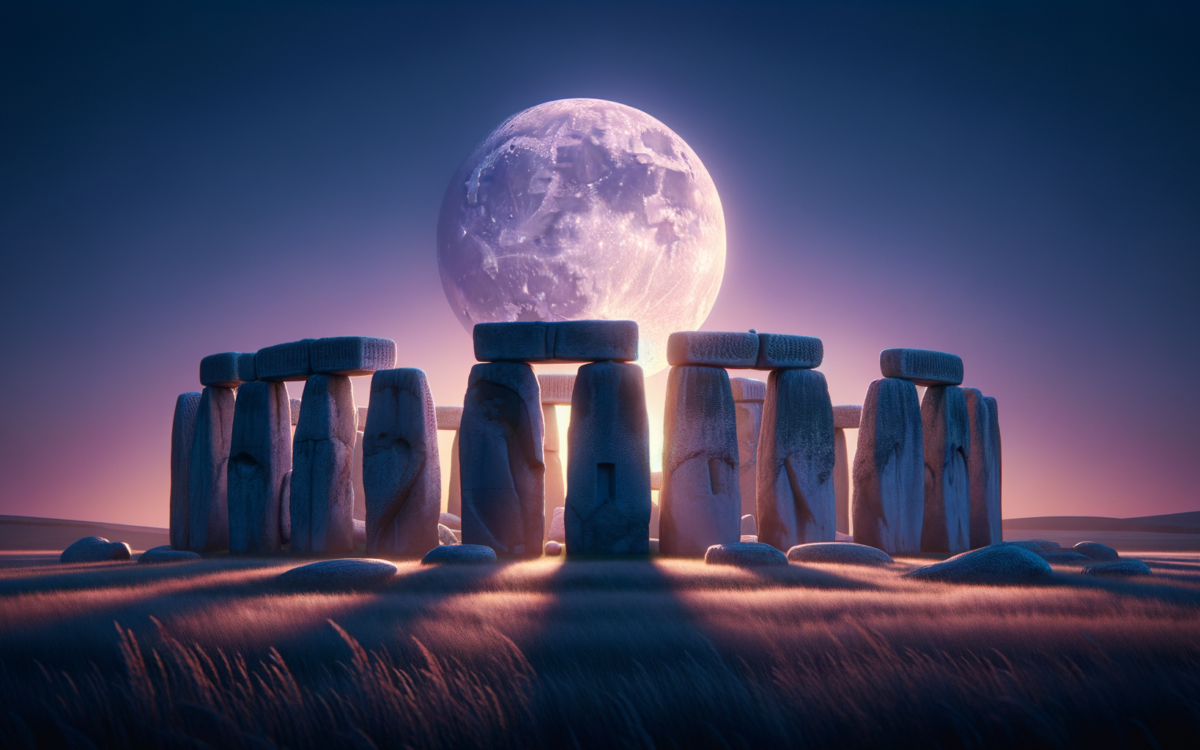Stonehenge and the Celestial Ballet: A Lunar Standstill Spectacle
- Stonehenge’s Alignment with the Moon: Researchers highlight the ancient structure’s connection not just with the sun but potentially with the lunar cycles during a rare event known as a major lunar standistill.
- The Phenomenon of the Major Lunar Standstill: Occurring every 18.6 years, this event showcases the moon’s extreme rising and setting points, offering a unique celestial show overlapping with this year’s summer solstice.
- Global Observations and Scientific Studies: Similar lunar alignments at indigenous landmarks across the U.S., and scientists’ efforts to capture the moon’s alignment with Stonehenge’s Station Stones for future research.
Unlocking the Lunar Secrets of Stonehenge
Witnesses to the summer solstice at Stonehenge are in for a celestial treat this year. As the sun dances with the Heel Stone, eyes will also turn to the moon, which, according to a longstanding theory, aligns with Stonehenge during the major lunar standstill – an event making its grand return after a 17-year hiatus.
The Major Lunar Standstill: A Rare Celestial Event
Dubbed as “lunistice,” this phenomenon emerges from a cosmic dance where the Earth and moon’s max tilts converge, creating prolonged appearances of the moon in our night sky. Not just a local spectacle, similar events illuminate indigenous sites across America, such as Chimney Rock and Chaco Canyon, marking a universal appeal of these celestial alignments.
Stonehenge’s Lunar Alignment: More than Just Sun Worship
Stonehenge, with its deep-rooted solar connections, also whispers of a lunar linkage. The alignment of its four Station Stones with the moon’s extremes suggests a sophisticated understanding of celestial movements by its creators. This year’s major lunar standstill provides the perfect backdrop for scientists to delve deeper into these mysteries, armed with cameras to capture these alignments.
Exploring the Moon’s Mysteries Through Stonehenge
The journey to comprehend Stonehenge’s relationship with the moon is filled with challenges. Unlike the sun’s predictable path, the moon’s extremes are harder to trace, demanding perfect timing and clear skies. This exploration seeks not only to document these celestial events but also to understand the ancient experiences of those who once stood in awe of them.
Jon’s Take
As we gaze up at the same moon that guided our ancestors, we’re reminded of the timeless fascination with what lies beyond our world. Stonehenge, in its silent majesty, serves not only as a bridge to our past but also as a beacon for our continuous quest for cosmic knowledge. The truth isn’t just out there – it’s right here, waiting to be discovered in the alignment of ancient stones under the light of the moon.
Original Article




